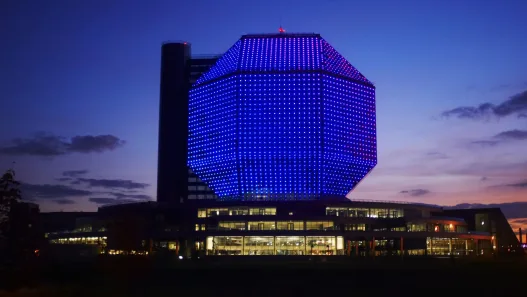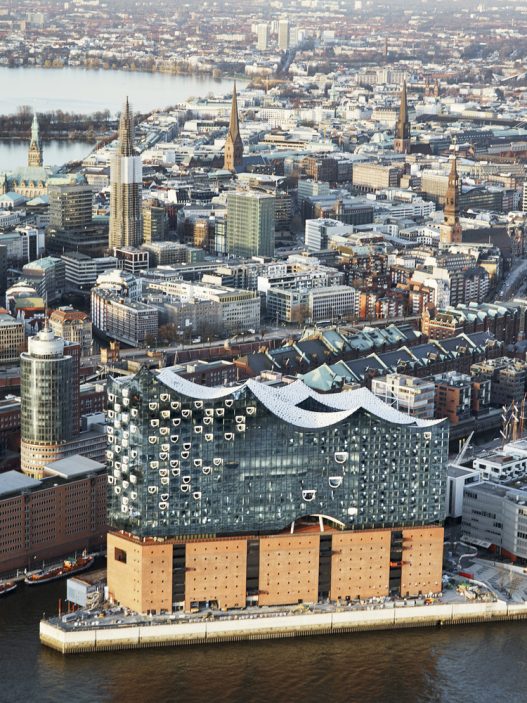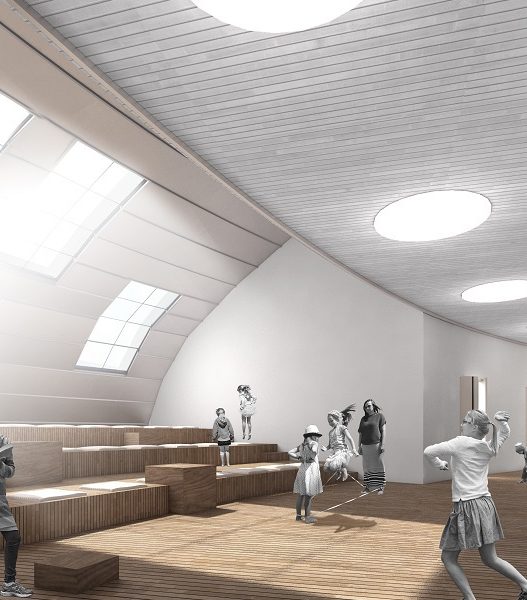Known for its beauty and durability, teak is a highly sought-after material in a variety of industries, particularly furniture making and shipbuilding. With its rich golden-brown hue and natural oils, teak not only captivates with its aesthetic appeal, but also has exceptional resistance to weathering, rot and insects. This introduction sets the stage for a more in-depth exploration of teak, its historical significance, physical properties and how it compares to other types of wood.

What is teak wood?
Teak, scientifically known as *Tectona grandis*, is a tropical hardwood native to Southeast Asia. It thrives in countries such as Indonesia, Myanmar, and India, where it grows in rich, moist forests. The wood from the teak tree is prized for its high oil content, which contributes significantly to its longevity and resistance to environmental factors. Teak is typically characterized by its distinctive golden or dark brown color, straight grain, and smooth texture. The wood is easy to work with and can be polished to a high shine, making it a favorite among craftsmen and builders alike.
Historical Importance
Teak has a deep-rooted history dating back thousands of years. It has been used in the construction of some of the most magnificent ships in history, including those of the British Royal Navy. The durability of teak made it ideal for maritime applications, allowing ships to withstand the harsh conditions of the open sea. Beyond its maritime use, teak has been an integral part of traditional architecture in many Asian cultures, where it has been used in temples, palaces, and homes. Its historical importance extends to its role in trade; during the colonial period, teak was a valuable commodity and helped establish trade routes connecting Asia to Europe and beyond.
Geographical Distribution
Teak is primarily found in tropical regions and its natural habitat includes Southeast Asian countries such as Thailand, Laos, and the Indian subcontinent. In recent years, plantations have also been established in Africa and South America due to the increasing global demand for this valuable wood. The climate in these regions, characterized by warm temperatures and seasonal rainfall, provides an ideal environment for teak to thrive. However, the expansion of teak plantations has raised concerns about sustainability and deforestation, and has led to efforts to promote responsible forestry practices.
Physical Properties of Teak Wood
Teak wood is renowned for its exceptional physical properties. It contains natural oils and silica that contribute to its resistance to water, pests, and rot. This makes teak an excellent choice for outdoor furniture and decking because it can withstand exposure to the elements without warping or rotting. Teak also has a closed grain structure, which helps prevent moisture absorption and increases its durability. The wood is also known for its stability, meaning it is less likely to expand or contract with changes in humidity or temperature. These properties make teak a reliable choice for a variety of applications, from luxury furniture to high-end yachts.
Comparisons with Other Woods
When compared to other types of wood, teak’s unique characteristics often set it apart. Unlike softer woods like pine or cedar, teak is much denser and more durable, making it less prone to scratches and dents. While some hardwoods like oak offer strength and beauty, they can’t match teak’s natural resistance to the elements. Teak is often compared to mahogany, another luxurious hardwood. While mahogany is prized for its rich color and fine grain, teak’s durability and weathering qualities give it an edge in outdoor applications. Ultimately, the choice between teak and other woods often comes down to the specific needs of a project, and teak is a top contender for those looking for longevity and aesthetic appeal.
As a result, teak stands out not only for its striking appearance, but also for its incredible durability and historical significance. As we continue to explore the uses and impacts of teak across a variety of industries, its legacy continues to be both respected and revered in the world of architecture and craftsmanship.
The Role of Teak in Southeast Asian Architecture
Known for its durability and beauty, teak has played an important role in the architectural heritage of Southeast Asia. This extraordinary hardwood, indigenous to the region, has shaped not only structures but also the cultural identity of many societies. Revered for its resistance to weathering, pests and decay, the wood is ideal for both traditional and modern uses. The story of teak in Southeast Asian architecture is a tapestry of history, craftsmanship and cultural significance.
Traditional Uses of Teak Wood
Teak has historically been a cornerstone of traditional construction in Southeast Asia. Its use covers a wide range of structures, from the grand temples of Cambodia to the simple homes of Thailand. The wood’s natural oils create a protective barrier, allowing buildings to withstand the region’s tropical climate. In rural villages, teak is often used to make everything from furniture to flooring, reflecting both practicality and aesthetic appeal.
The craftsmanship involved in working with teak is deeply ingrained in local traditions. Craftsmen have honed their skills over generations and used techniques that have been passed down through time. The intricate carvings and designs found on traditional teak structures tell stories of culture and spirituality, and the motifs often reflect the beliefs and values of the communities that created them.
Teak in Royal Palaces
Teak's association with royalty is particularly prominent in Southeast Asia. Many royal palaces, such as the magnificent Royal Palace in Bangkok, display the grandeur of teak architecture. These structures are not just functional spaces, but also symbols of power and prestige. The use of teak in such structures signifies a connection to tradition and heritage.
The craftsmanship found in the royal palaces is extraordinary. The elaborate wooden beams, intricately carved pillars and beautifully crafted doors highlight the skill of the craftsmen. The serene beauty of the teak wood, combined with its durability, creates a lasting impression and reinforces the importance of these palatial structures in the cultural landscape of the region.
Influence on Regional Styles
Teak has also influenced various regional architectural styles in Southeast Asia. Each country has adapted the use of teak to suit its unique cultural context. In Indonesia, for example, traditional houses known as rumah adat often have high roofs and intricate wooden designs, showcasing the versatility of teak. In Myanmar, meanwhile, teak is a dominant material in the construction of pagodas and monasteries, where it holds spiritual significance.
The adaptability of teak has allowed it to blend seamlessly with different architectural elements. Whether it’s the curvaceous lines of a Javanese joglo or the angular designs of a Thai temple, teak serves as a unifying element that reflects the rich diversity of the region. The combination of these styles demonstrates how local cultures have adopted teak to express their own identities.
Protection of Cultural Heritage
As modernity encroaches on traditional practices, the preservation of teak architecture is becoming increasingly vital. Many communities have recognised the cultural value of their timber heritage and have initiated efforts to preserve and restore these structures. Organisations and governments are working together to protect ancient temples, palaces and traditional houses, ensuring that future generations can appreciate their significance.
Preserving teak architecture is not just about preserving the physical structures; it also includes preserving the stories and techniques associated with them. Workshops and cultural programs are being developed to train young artisans in traditional woodworking skills. By encouraging an appreciation of teak and its historical context, communities can keep their cultural heritage alive.
Modern Adaptations in Architecture
In recent years, teak has found new life in modern architecture. Contemporary designers are incorporating teak into innovative designs that respect traditional aesthetics while embracing modern functionality. This fusion of old and new creates spaces that are both beautiful and practical.
For example, luxury resorts and eco-friendly homes are increasingly using teak for its sustainability and visual appeal. Its natural resistance to decay makes it an excellent choice for outdoor structures like decks and pergolas. In urban settings, architects are integrating teak into modern buildings to create warm, inviting spaces that contrast with cold concrete and steel.
The use of teak in contemporary architecture not only honors its rich heritage, but also showcases its versatility in meeting modern needs. As architects and designers continue to explore the potential of teak, it will continue to be a symbol of Southeast Asia’s enduring architectural heritage, bridging the gap between tradition and innovation.
As a result, the role of teak in Southeast Asian architecture is multifaceted, encompassing traditional practices, royal significance, regional influences, cultural preservation and modern adaptations. This extraordinary wood continues to inspire and shape the architectural landscape, reflecting the rich history and vibrant cultures of the region.
Sustainability and Teak Sourcing
Sustainability in the context of teak sourcing is crucial as it addresses the environmental, economic and social impacts of timber production. Known for its durability and aesthetic appeal, teak has long been a preferred choice in the furniture and construction sectors. However, the demand for teak has led to significant concerns about deforestation and natural resource depletion. To ensure that teak remains a viable resource for future generations, sustainable practices need to be implemented throughout the sourcing process. This section explores the various aspects of sustainable teak sourcing, examining practices, certifications and the wider impact of these approaches.
Sustainable Forestry Practices
Sustainable forestry practices are essential to maintaining the health of forest ecosystems while meeting human resource demands. In the teak context, this means managing forests to allow timber harvesting without compromising the forest’s ability to regenerate. Techniques such as selective logging, where only certain trees are harvested, help protect the environment and promote biodiversity. Additionally, agroforestry, which integrates trees with crops or livestock, can improve soil health and increase farm productivity.
An excellent example of sustainable forestry is the teak plantations in countries like Costa Rica and India, where practices are designed to mimic natural forest ecosystems. These plantations focus on striking a balance between efficient land use and environmental protection, ensuring that both local communities and wildlife benefit from the resources.
Certification and Standards
Certification is a key factor in promoting sustainable teak sourcing. Organisations such as the Forest Stewardship Council (FSC) and the Programme for the Endorsement of Forest Certification (PEFC) set rigorous standards for sustainable forestry. These certifications ensure that timber comes from well-managed forests that meet environmental, social and economic criteria.
When consumers purchase certified teak, they can be confident that it has been harvested responsibly. This not only supports sustainable practices, but also encourages producers to adhere to higher standards. As many consumers increasingly seek out more environmentally friendly products, certification can significantly impact market dynamics. As a result, companies that prioritize sustainable practices can gain a competitive advantage in the market.
The Impact of Illegal Logging
Illegal logging poses a significant threat to sustainable forestry and has far-reaching consequences for both the environment and local communities. This practice often involves cutting down trees without permission, in defiance of regulations designed to protect forests. The impact is devastating, leading to deforestation, biodiversity loss and ecosystem degradation.
Moreover, illegal logging undermines the economic viability of sustainable forestry. When illegal timber enters the market, it can reduce the price of legally sourced wood and make it harder for sustainable producers to compete. This not only harms the environment, but also impacts the livelihoods of communities that depend on responsible forestry practices. To combat illegal logging, strong enforcement of laws, international cooperation and consumer awareness are needed to encourage the purchase of legally sourced timber.
Economic Benefits of Sustainable Teak
Sustainable teak sourcing offers a number of economic benefits that go beyond immediate profit margins. By investing in sustainable practices, companies can enhance their reputation, attract a growing market of environmentally conscious consumers, and ensure their long-term viability. Sustainable teak plantations contribute to local economies by creating jobs in forestry, manufacturing, and tourism.
For example, in regions where teak is grown sustainably, local communities often engage in eco-tourism or handicraft industries that showcase their culture and the beauty of their natural environment. This holistic approach not only supports the economy, but also fosters a sense of pride and environmental responsibility in society. As a result, the economic benefits of sustainable teak are intertwined with the health of the ecosystems and communities that support them.
The Future of Teak Sourcing
The future of teak sourcing is set to evolve as awareness of sustainability issues grows. As consumers demand greater transparency in their supply chains, companies will need to adopt sustainable practices to stay relevant. Technology innovations such as blockchain are emerging to track the origin of timber and ensure its sustainability throughout the supply chain.
Additionally, teak cultivation may change as climate change continues to impact global forests. Adaptive forestry practices and research into resilient tree species will be crucial to teak’s continued viability in changing climates. The focus will likely be on creating mixed-use forests that not only produce teak but also enhance biodiversity and ecosystem services.
In summary, sustainable teak sourcing holds the promise of preserving this valuable resource for future generations. By implementing responsible forestry practices, achieving certification, combating illegal logging and recognizing the economic benefits, we can ensure that teak continues to be a sustainable choice for both consumers and the planet. The way forward requires collective effort and commitment from all stakeholders in the teak supply chain.
Maintenance and Longevity of Teak Structures
Known for its exceptional durability and beautiful grain, teak has become a preferred material for construction, especially in areas with high humidity and variable weather conditions. Understanding the maintenance and longevity of teak structures is crucial to both preserving these stunning creations and ensuring their functionality over time. This section covers the natural characteristics of teak that contribute to its longevity, maintenance practices that extend its life, common problems encountered, restoration of historic teak structures, and important case studies that demonstrate the durable nature of teak.
Natural Resistance to Decay
Teak has an exceptional natural resistance to decay, making it an ideal choice for outdoor structures, furniture, and marine applications. This resistance is primarily due to the natural oils and silica found in the wood. These oils form a protective barrier against moisture, insects, and fungi, which are common culprits in wood deterioration.
In tropical climates, where humidity levels are high and pests are abundant, teak outshines many other woods. It can withstand harsh weather conditions without warping or cracking, which is why it has historically been used in shipbuilding and as decking in coastal areas. Teak’s inherent durability means that structures made from this wood can last for decades, if not centuries, when properly cared for, making it a sustainable choice for construction.
Care Practices for Teak
While the natural properties of teak give it a long life, regular maintenance is essential to keep it looking its best and maximizing its longevity. One of the most vital practices is cleaning. Washing teak surfaces regularly with mild soap and water will help remove dirt and grime that can build up over time. This simple step will help prevent mold and mildew from forming, which can compromise the integrity of the wood.
Another important aspect of teak wood maintenance is oiling. Applying a special teak oil helps restore the wood’s natural shine and improves its water-resistant properties. This treatment not only increases aesthetic appeal, but also nourishes the wood, keeping it flexible and reducing the likelihood of cracking.
It is also very important to monitor the structural integrity of teak buildings. Regular inspections for signs of wear and tear, such as loose joints or small cracks, will allow for timely repairs, preventing minor issues from becoming major problems.
Common Problems and Solutions
Despite its durability, teak structures can experience common problems that require attention. One common problem is discoloration. Teak wood can lose its rich golden color over time and turn a silvery gray color due to exposure to sunlight and weathering. While some appreciate this patina, those who prefer the original color may choose to refinish the wood.
Another concern is the potential for warping or splitting, especially if the wood is not properly cured or has been subjected to extreme temperature fluctuations. To combat this, maintaining consistent humidity levels in indoor areas and using proper sealing techniques can help reduce these effects.
Although the natural oils of teak provide some protection, insect infestations, especially termites, can also be a problem. Regular inspections and the use of natural insect repellents can help protect structures from these pests.
Restoration of Historical Teak Palaces
Restoring historic teak palaces is a fascinating endeavor that combines preservation with modern techniques. Built centuries ago, many of these structures display intricate carvings and striking architecture that reflect the craftsmanship of their time. Preserving their integrity requires a deep understanding of the original materials and methods used.
Restoration projects often begin with comprehensive assessments to identify areas of decay or damage. Skilled craftsmen may be called upon to replicate original features to ensure the repairs are in harmony with the existing structure. This process often involves sourcing high-quality teak that matches the original wood in both appearance and properties.
A perfect example of this type of restoration is the famous teak palaces in India, where craftsmen have meticulously restored ornate columns and intricate doorways, ensuring that these architectural wonders continue to tell the stories of their rich history.
Example Applications for Long-Lasting Teak Structures
Examining case studies of long-lasting teak structures provides valuable information about the durability of the wood and the effectiveness of maintenance practices. One notable example is the Konarak Sun Temple in India, built in the 13th century. Although constructed primarily of stone, the intricate wooden components, originally manufactured from teak, have been preserved through careful maintenance and restoration efforts.
Another interesting example is the floating teak houses in Thailand. Built on stilts over water, these houses have survived for generations thanks to teak’s natural resistance to moisture and rot. Regular maintenance, including inspections and oiling, has allowed these structures to thrive in harsh environments.
These examples highlight not only the durability of teak, but also the importance of proactive maintenance and restoration practices in ensuring the longevity of such extraordinary structures. With dedicated care and appreciation of the wood’s unique properties, we can continue to enjoy the beauty and functionality of teak for many years to come.
Cultural and Aesthetic Importance of Teak Wood
Known for its durability and beauty, teak holds an important place in the cultural and aesthetic landscapes of various societies, especially in Southeast Asia. This rich, golden timber embodies not only physical strength but also deep-rooted cultural meanings, artistic traditions and modern design philosophies. Understanding the importance of teak offers insights into the interaction between nature, culture and human creativity.
Symbolism in Southeast Asian Cultures
In Southeast Asia, teak is more than just a building material; it symbolizes strength, longevity, and durability. Traditionally, teak trees have been considered sacred in many cultures and are often associated with spiritual beliefs and practices. For example, in countries such as Indonesia and Myanmar, teak is often used in the construction of temples and ceremonial sites, reflecting its importance in religious and social life.
The presence of teak in homes and public buildings is a testament to cultural pride and heritage. Because the tree is indigenous to the region and has been part of the landscape for centuries, it represents a connection between people and their environment. This deep-rooted connection fosters a sense of identity and belonging, where communities see teak not just as a resource but as a vital part of their cultural narrative.
Artistic Expressions in Teak Work
Teak’s workability and natural beauty make it a preferred medium for artisans. The intricate carvings and craftsmanship seen in traditional teak furniture and structures tell stories of cultural heritage and artistic expression. In places like Thailand, artisans bring the wood to life by creating elaborate designs that incorporate local folklore, religious symbols and natural motifs.
This artistic tradition is not just about aesthetics; it embodies values and skills passed down through generations. The meticulous craftsmanship process, from selecting the right wood to the finishing touches, showcases the craftsman’s respect for the material and the heritage it represents. Through such expressions, teak becomes a storytelling canvas, where each piece carries a unique narrative that resonates with its cultural roots.
Teak in Contemporary Design
In modern architecture and interior design, teak continues to be a sought-after material for both its beauty and functionality. Designers often incorporate teak into contemporary spaces, blending traditional aesthetics with modern sensibilities. Its rich color and natural grain provide warmth and elegance, making it an ideal choice for everything from furniture to flooring.
A resurgence of interest in sustainable materials has further increased the popularity of teak. As more designers and consumers prioritize eco-friendly options, responsibly sourced teak offers a sustainable alternative that aligns with contemporary values. This shift not only respects the environment, but also honors the cultural significance of wood, creating a bridge between past and present.
Community and Identity
Teak plays a vital role in shaping community identity, especially in regions where it has been a part of daily life for centuries. In many Southeast Asian villages, teak is used in common spaces, from marketplaces to meeting halls, strengthening social ties and cultural practices. The wood becomes a symbol of social strength and continuity, reflecting the collective identity of the people.
Moreover, the craftsmanship involved in working teak often fosters community pride. Craftsmen collaborate, share techniques, and celebrate their heritage through workshops and exhibitions. This collaborative approach not only preserves traditional skills, but also empowers individual craftsmen, creating a sense of ownership and responsibility for their cultural heritage.
Teak in Global Architecture
As globalization continues to shape architectural practices, teak has found its way into designs far beyond its homeland. Architects and designers worldwide appreciate teak’s aesthetic qualities and durability, incorporating it into structures ranging from luxury homes to public buildings. This global presence highlights teak’s versatility, as it adapts to a variety of architectural styles while maintaining its distinctive beauty.
Furthermore, the use of teak in international projects often raises awareness of its cultural significance. When architects choose teak, they are not only using a high-quality material, they are also showing respect for the regions from which it originated. This practice fosters a greater appreciation of cultural diversity in architecture, encouraging dialogue between different design philosophies and reinforcing the idea that architecture is a collaborative, global endeavor.
Ultimately, the cultural and aesthetic significance of teak extends far beyond its physical attributes. It embodies the stories, traditions and identities of the communities that value it. From its symbolic roots in Southeast Asian cultures to its modern applications in global architecture, teak remains a remarkable testament to the enduring relationship between humanity and nature.
Conclusion and Future Perspectives
Summary of Key Points
As we explore the multifaceted world of teak, it becomes clear that its importance in architecture and design goes beyond just aesthetics. Teak is renowned for its durability, resistance to weathering, and rich, warm tones that enhance any space. We discussed its historical importance, particularly in traditional shipbuilding and furniture making, and how these practices pave the way for modern uses in sustainable architecture. The wood’s natural oils provide natural protection against insects and rot, making it a preferred material for outdoor environments. However, the rise of eco-friendly design has brought to light the need for responsible sourcing and sustainable practices when using teak.
Difficulties Encountered in the Use of Teak Wood
Despite its many benefits, teak wood is fraught with challenges. The most pressing issue is deforestation and unsustainable harvesting practices that threaten teak forests, particularly in Southeast Asia. This not only endangers ecosystems, but also undermines the long-term availability of this valuable material. In addition, the high demand for teak is driving up prices, making it less accessible to smaller projects or new designers. There is also the challenge of ensuring that teak is sourced from responsibly managed plantations, as not all suppliers adhere to sustainable practices. This complexity requires a deeper understanding among architects, designers and consumers about the implications of their choices.
Innovations in Tick Applications
Innovations in the application of teak are constantly evolving and reflect a blend of tradition and modern design. Architects and designers are experimenting with teak that honors its heritage and pushes the boundaries of contemporary aesthetics. For example, teak is increasingly being used in modular homes and eco-friendly buildings, where its flexibility can enhance sustainability. In addition, new treatments and coatings are being developed to increase its longevity and performance in a variety of climates. These innovations are not just about functionality; they also highlight the beauty of teak, showcasing its unique grain patterns and colors in innovative structures that are in harmony with nature.
Sustainable Architecture Vision
Looking ahead, the vision of sustainable architecture is one in which materials such as teak play a key role. Integrating sustainable practices into design, such as sourcing wood from certified forests, reusing materials, and using energy-efficient construction methods, can lead to buildings that not only meet aesthetic and functional needs but also contribute positively to the environment. This approach involves collaboration between architects, builders, and environmentalists to ensure that the natural beauty and durability of teak are not compromised. By embracing this vision, we can create spaces that are integrated with nature and foster a deeper connection between the built environment and the ecosystem.
Call to Action for Conservation
Protecting teak and its ecosystems is not just the responsibility of policymakers or conservationists; it requires a collaborative effort from all stakeholders, including designers, consumers, and communities. This call to action highlights the importance of making informed choices when selecting materials for projects. Supporting brands and suppliers that prioritize sustainability, advocating for responsible forestry practices, and educating others about the ecological impacts of wood sourcing are all important steps. By fostering a culture of conservation, we can ensure that future generations continue to appreciate the beauty and benefits of teak while preserving the health of our planet. Together, we can build a future that honors both our architectural heritage and our commitment to sustainability.


















